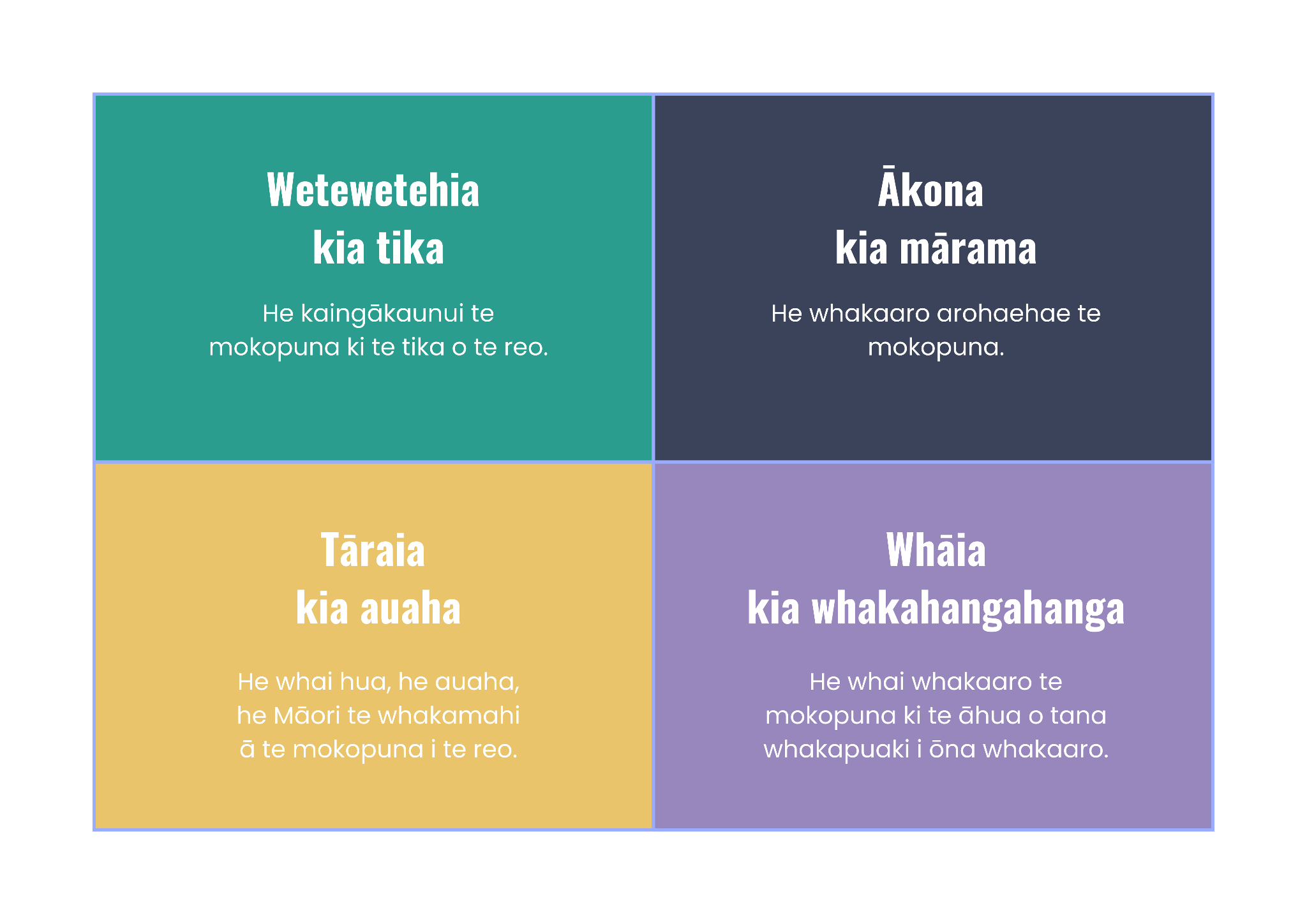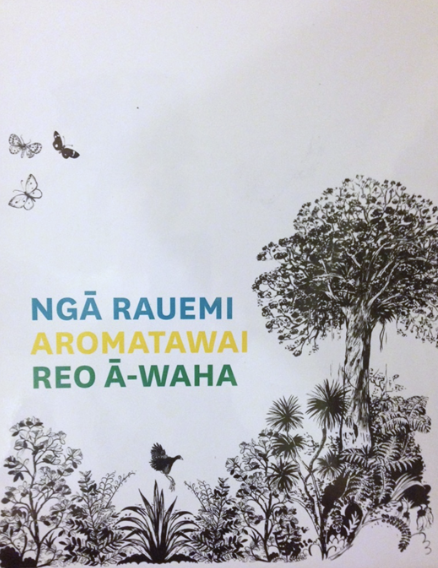I NGĀ MARAMA E ONO
TE ARA WHAKAAKO I TE KŌRERO
Whārangi Ihirangi
Mātua ko te Kōtuitui
Kaiako should explicitly plan to integrate the language strands, whakarongo, kōrero, pānui, tuhituhi, mātakitaki and whakaatu.
Language competency is critical for ākonga to successfully access the curriculum and learning that is relevant to their world.
It is important to make connections across the curriculum between prior knowledge and new knowledge by providing a range of stimulating and engaging experiences.
I ngā marama e ono: Te Whakarite i te Akoranga Reo ā-Waha
Deliberately plan the language lesson including the purpose, the new vocabulary and target language that will be taught.
Plan whakarongo, mātakitaki, whakaatu and kōrero activities to support the new language.
Make connections in your planning to pānui and tuhituhi.
Integrate reo ā-waha across all learning areas.
Source a variety of language materials that support the kaupapa and/or the target language for example, natural resources from the taiao, poems, pictures, posters, books, video clips.
I ngā marama e ono: Te Whakaako i Te Huanui ki te Reo
Te whakamāramatanga me ngā āhuatanga mō te huanui ki te reo
Te Huanui ki te Reo is recommended as an oral language instructional approach. This oral language approach combines aspects of the communicative approach, task-based learning and content-based instruction. These approaches provide a structure for scaffolding new vocabulary and language. Including opportunities to model, support, and integrate oral language within meaningful contexts.
Ko te hononga o te rere o te reo, te tika o te reo, me te takoto o te reo
The relationship between fluency, accuracy and complexity
In second language teaching, fluency, accuracy, and complexity are key. Fluency ensures smooth communication, accuracy focuses on correct language use, and complexity involves sophisticated structures. The communicative approach emphasises fluency through real-life interactions. Task-based learning prioritises communicative competence via meaningful tasks, while content-based instruction integrates language learning within a kaupapa, promoting both fluency and complexity.
When the emphasis is on fluency, accuracy and complexity can be affected (i.e. ākonga are likely to make more language errors as they focus on speaking smoothly and quickly).
When the emphasis is on accuracy, fluency and complexity can be affected (i.e. ākonga may speak more slowly and less naturally).
When the emphasis is on complexity, fluency and accuracy can be affected (i.e. ākonga may struggle to maintain a natural flow and make more mistakes as they attempt more sophisticated language structures).
Balancing these elements is essential for comprehensive language proficiency.
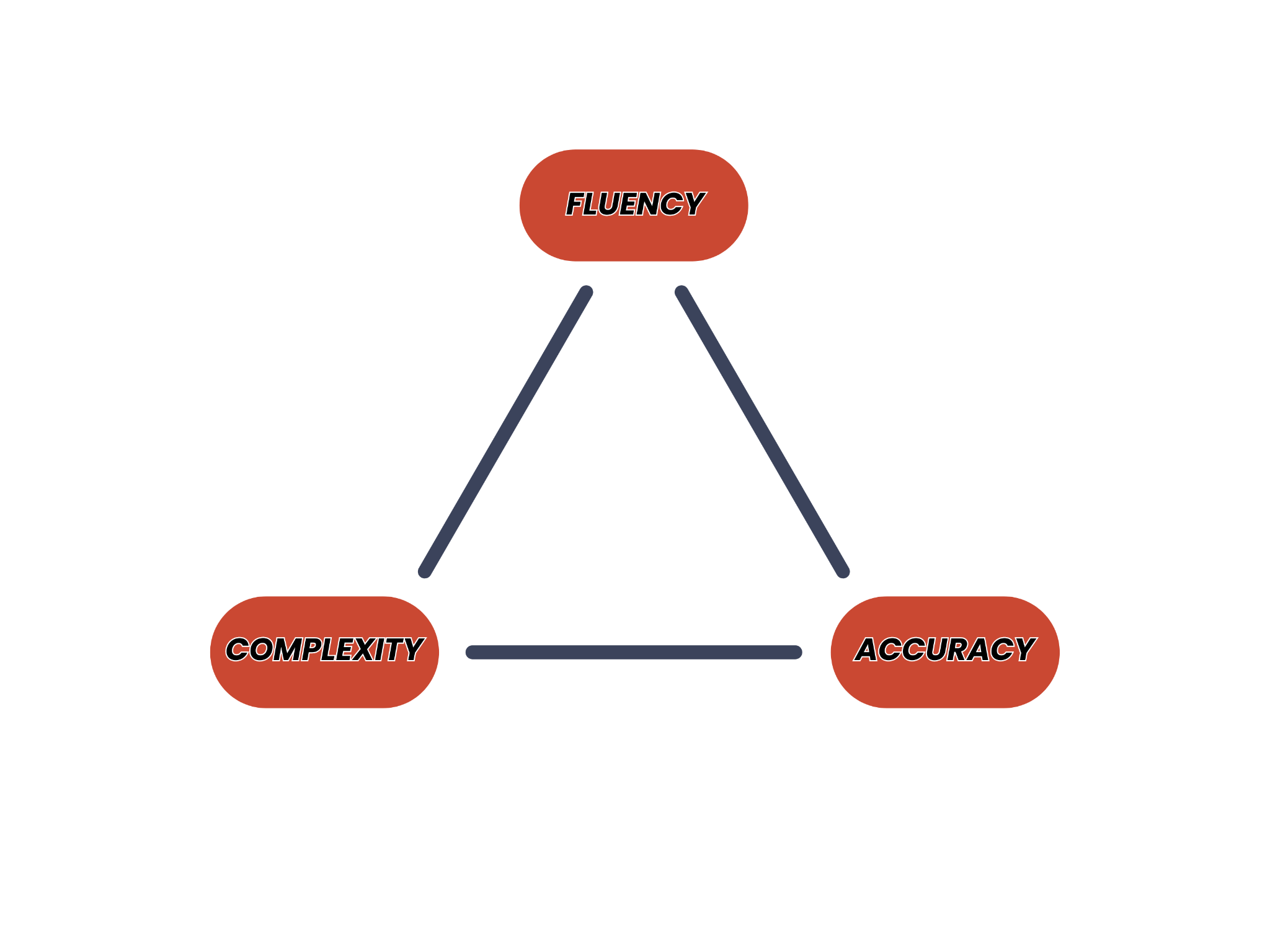
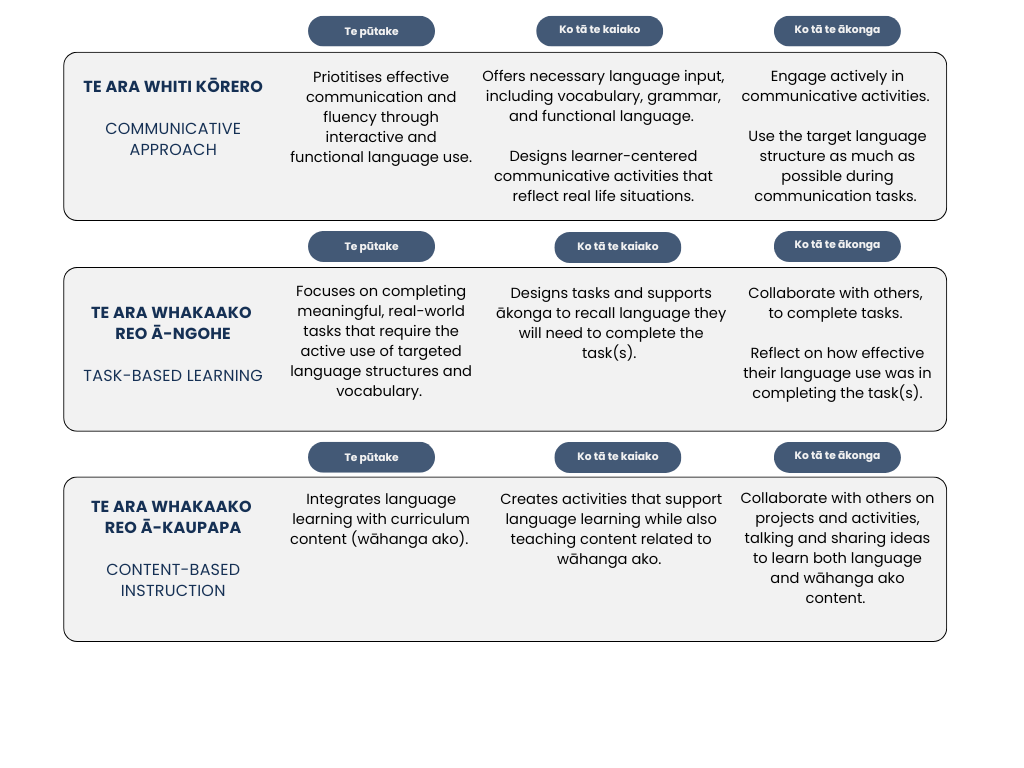
I ngā marama e ono: Te Whakahaere i Te Huanui ki te Reo
Below are examples of what the kaiako and ākonga are likely to be doing at each stage of Te Huanui ki te Reo. Activities have been sourced from He Rau Taki Kōrero and Te Reo ā-Waha: He Aratohu mā te Pouako to support this:
Te Ara Whakatauira Reo ā-waha
The kaiako will:
Set the context for learning.
Begin with a stimulus to engage the ākonga
Highlight new vocabulary pertaining to the context.
Teach the meaning, pronunciation and application
of the new vocabulary through planned language activities.
Model the new vocabulary in a sentence.
The ākonga are:
Activating prior knowledge.
Connecting their experiences to the stimulus.
Sharing ideas.
Learning new vocabulary.
Listening to the kaiako model the target language.
To support implementation of Te Ara Whakatauira Reo ā-waha, click the thumbnails or links below to download the following activities:
Te Ārahi i te reo
The kaiako will:
Isolate the language structure from the stimulus.
Provide guided exercises for ākonga to practice using the target language structure with support. For example, role play, games, and a variety of listening and speaking activities.
Foster dialogue through dynamic pair work and interactive small group activities.
Provide wait time for ākonga to collect their thoughts before responding.
The ākonga are:
Listening to ideas from the kaiako and other ākonga.
Understanding the function and purpose of the target language.
Practising the new language within the context.
To support implementation of Te Ārahi i te reo, click the thumbnails or links below to download the following activities:
Resource: He Rau Taki Kōrero
Te Tuku i te reo
The kaiako will:
Assign tasks or activities to practice using the target language without direct support.
Consolidate the learning and review the language structure.
Encourage ākonga to expand their knowledge by using the target language in different contexts.
The ākonga are:
Practising the new language with their peer.
Contributing ideas to group discussions.
Consolidating the understanding, function and purpose of the target language.
Gaining confidence and using the target language in new contexts.
To support implementation of Te Tuku i te reo, click the thumbnail or link below to download the following activity:
Te Kōtuitui i te reo
The kaiako will:
Encourage ākonga to use the target language creatively and flexibly.
Offer ongoing support for ākonga to continue practising and mastering the target language.
The ākonga are:
Communicating confidently with their peers and others.
Applying the target language to a variety of contexts.
I ngā marama e ono: Ngā Toi Mokopuna - Kōrero
This section outlines the skills, strategies and knowledge required in kōrero for the first six months.
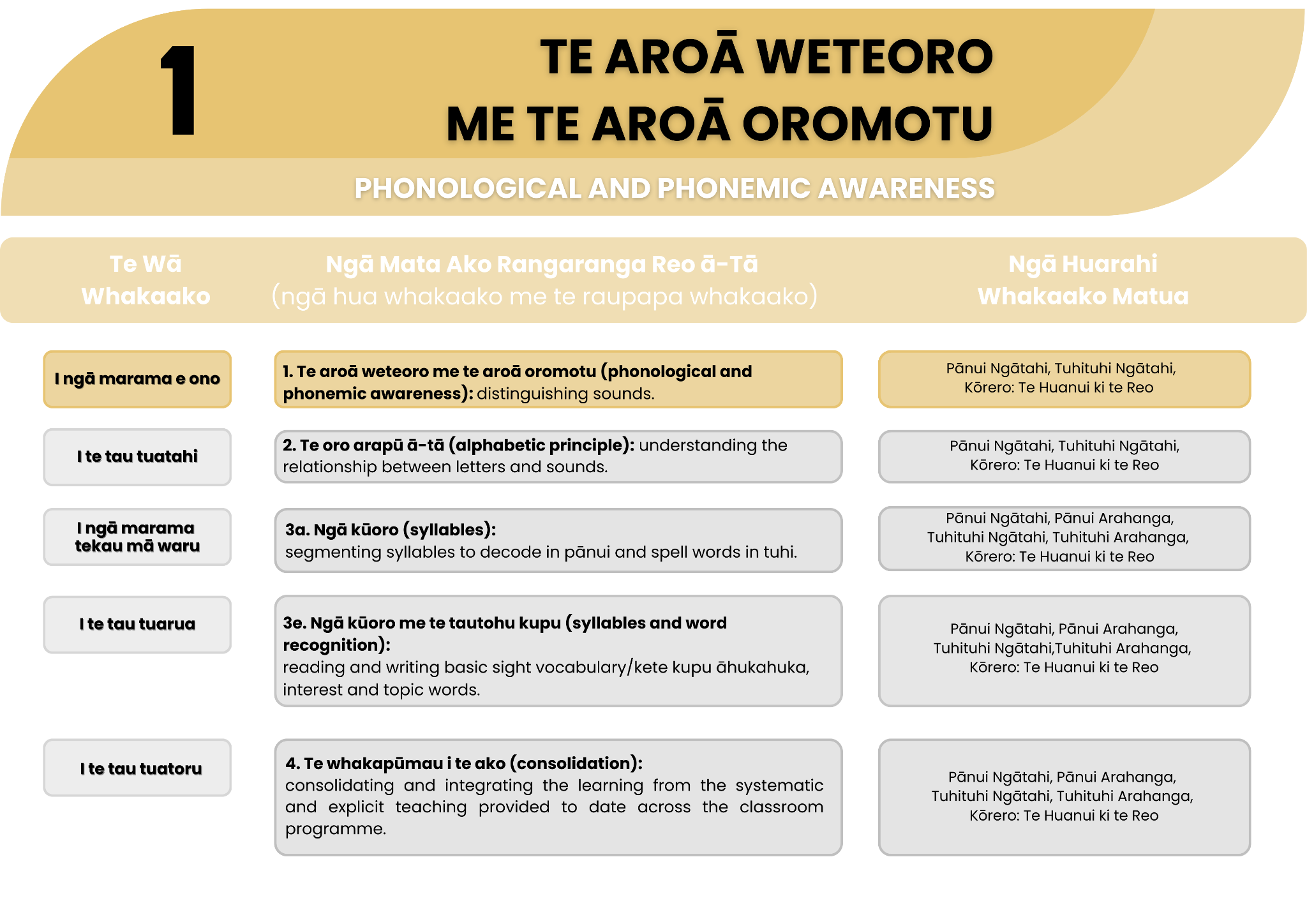
Wetewetehia kia tika
He kaingākaunui te mokopuna ki te tika o te reo.
Te whāinga
Ākonga learning focuses on accurately using and understanding basic vocabulary and sentence structures.
Rangaranga Reo ā-Tā
Ngā Tohu Ako
Te ngako o te whāinga
During a lesson, support the ākonga to:
(Rangaranga Reo ā-Tā: Te Aroā Weteoro me te Aroā Oromotu) Distinguish sounds.
Draw on what language/s they have to communicate.
Practice and produce simple vocabulary and language structures.
Practice speaking and listening daily to reinforce the learning and improve retention.
Begin to respond to simple questions.
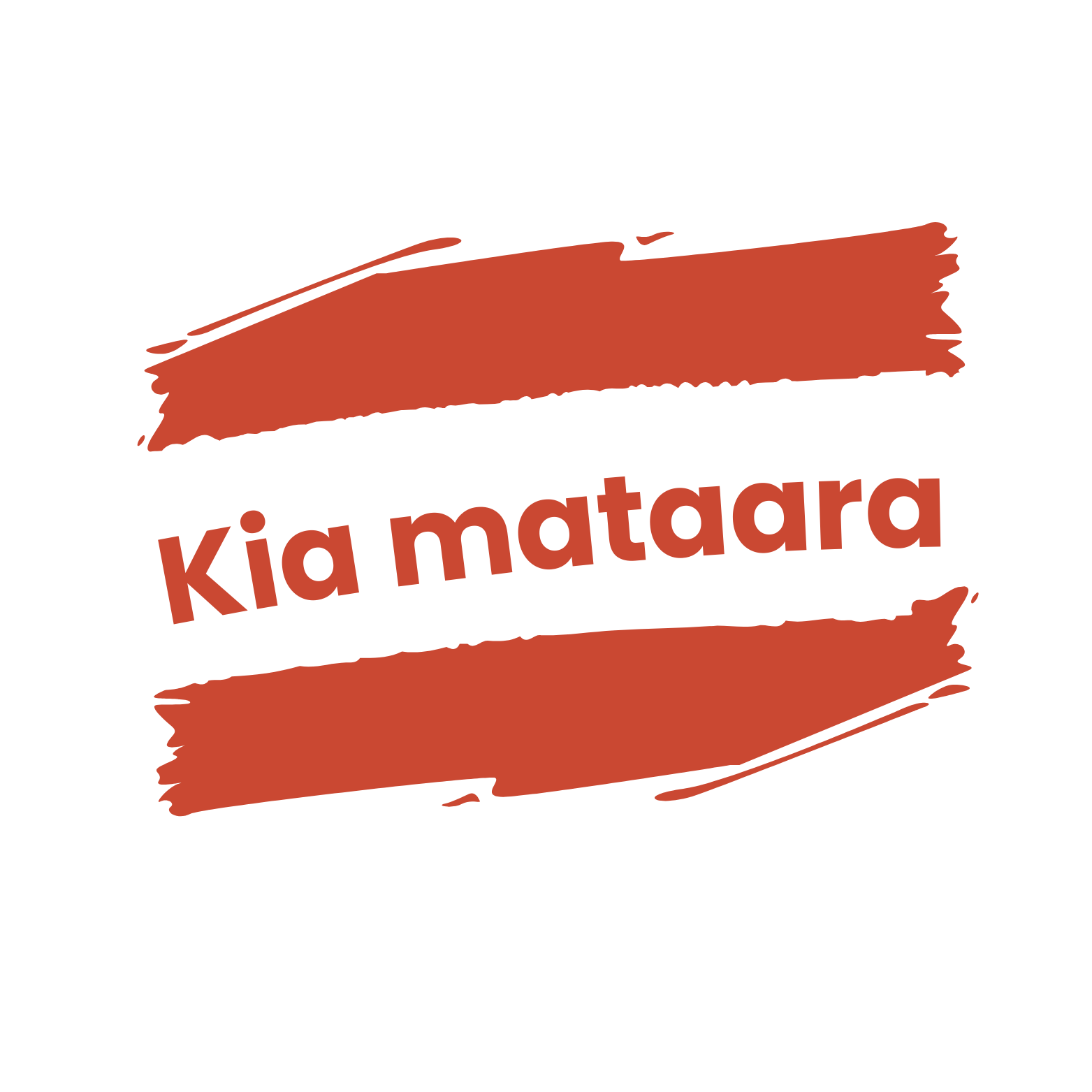
By the end of six months, ākonga need to be able to distinguish the sounds in te reo Māori (phonemes).
Ākona kia mārama
He whakaaro arohaehae te mokopuna.
Te whāinga
Ākonga learning focuses on developing basic comprehension skills and strategies.
Ngā Tohu Ako
Te ngako o te whāinga
During a lesson, support the ākonga to:
Listen and practice the correct pronunciation of words and essential sounds.
Listen for key words and use gestures to support understanding.
Understand and produce simple sentences.
Begin to ask simple questions.
Whāia kia whakahangahanga
He whai whakaaro arohaehae te mokopuna ki te āhua o tana whakapuaki i ōna whakaaro.
Te whāinga
Ākonga learning focuses on developing basic interpersonal communication skills.
Ngā Tohu Ako
Te ngako o te whāinga
During a lesson, support the ākonga to:
Use and respond to simple greetings.
Listen when others are speaking.
Use basic body language cues to support meaning.
Develop an awareness of the audience.
Tāraia kia auaha
He whai hua, he auaha, he Māori te whakamahi a te mokopuna i te reo.
Te whāinga
Ākonga learning focuses on discovering ways to express thoughts and imagination.
Ngā Tohu Ako
Te ngako o te whāinga
During a lesson, support the ākonga to:
Use vocabulary and language structures through meaningful contexts.
Talk about their personal responses related to the learning.
I ngā marama e ono: He Tauira Reo ā-Waha
The Māori language proficiency of ākonga will vary depending on if they have te reo Māori at home, have attended a kōhanga or puna reo or are just beginning to learn te reo Māori at kura.
In the first 6 months, ākonga new to te reo Māori will be developing the sounds of te reo Māori, building their vocabulary, expressing themselves using basic sentence structures, and asking simple questions. They will also follow and use body language to understand and convey messages. It is important for kaiako to acknowledge prior learning and the language ability of ākonga and teach accordingly.
(More to be added)
I ngā marama e ono: Te Aromatawai i te Kōrero
Upon entry, ākonga bring with them varying degrees of knowledge and experiences in te reo Māori. Therefore, it is important for kaiako to listen to the language that ākonga use, which can form the basis of the oral language programme. This will ensure the different language levels and range of abilities are catered for appropriately.
Aromatawai ō te ako (of learning) and aromatawai mō te ako (for learning).
Aromatawai should be personalised to reflect the reality that ākonga are at different stages in their learning journey and move through that journey at different speeds. This includes valuing neurodiversity (i.e., that all brains function differently) which is particularly important for neurodivergent ākonga.
Ākonga should be encouraged and supported to understand the purpose of aromatawai and be active participants in gathering information through aromatawai activities such as self-reflection, self assessment and the creation of portfolios of work that demonstrate their learning.
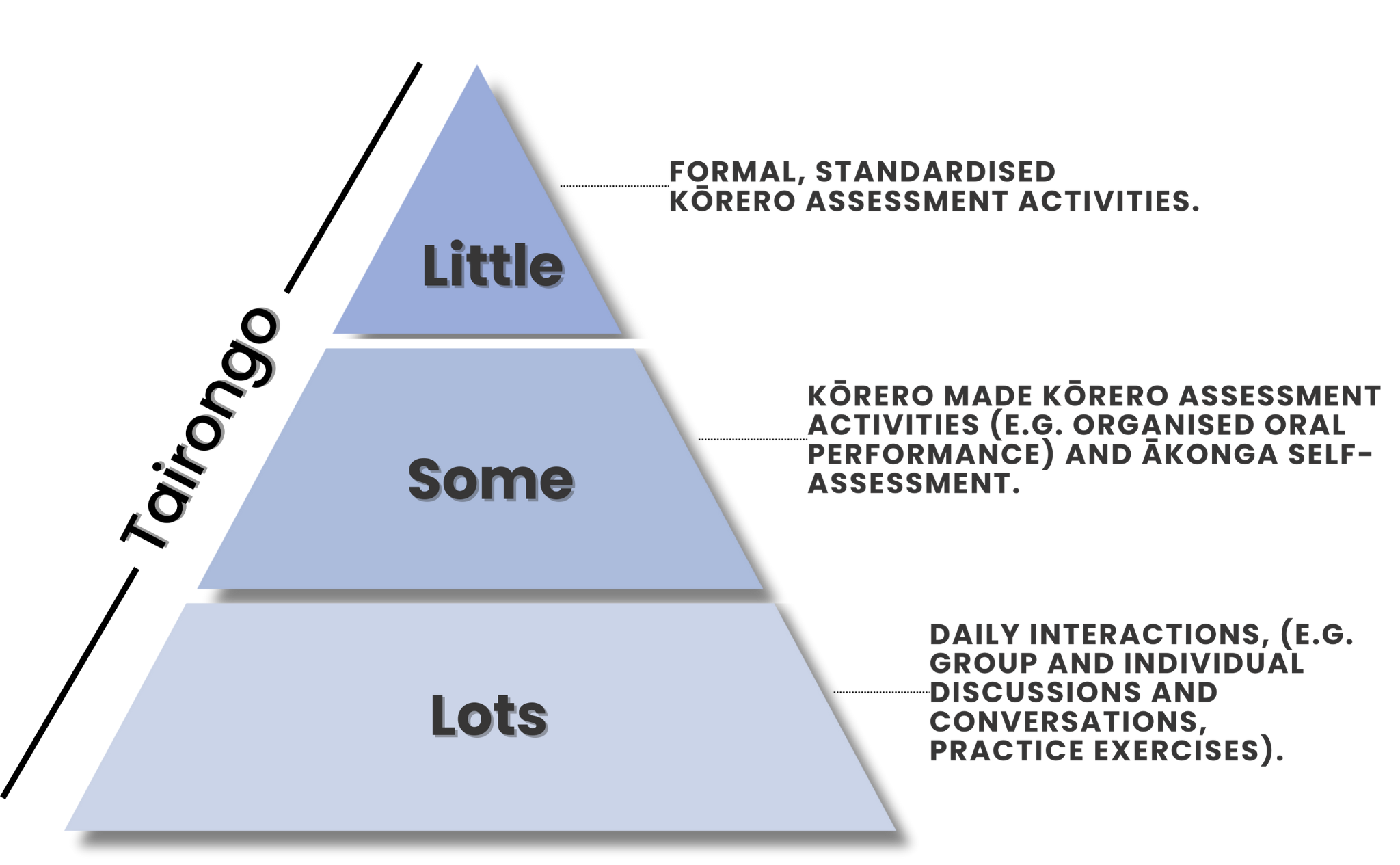
MAHI AROMATAWAI: What to look/listen for, ākonga are:
Confident to engage in conversations.
Willing to take risks and communicate in the target language using their puna reo Māori or code switching between languages.
Able to follow simple instructions.
Interacting with peers.
Able to articulate ideas, thoughts and feelings.
Able to express wants and needs.
Ngā Rauemi Aromatawai Reo ā-Waha
Kia Tere Tonu | Ākonga 1 | Mahaki | Ōna tau 5. 1
Takapiringa | Ākonga 2 | Te Moana | Ōna tau 5.1
